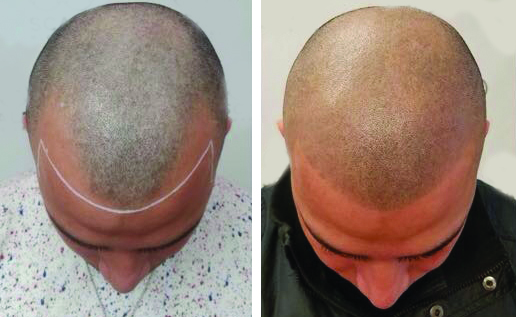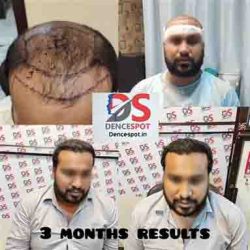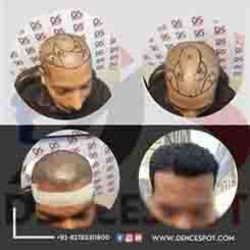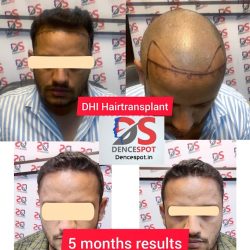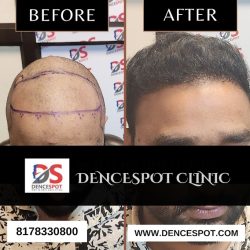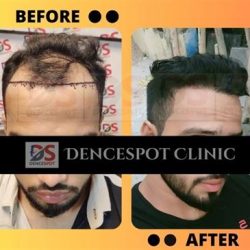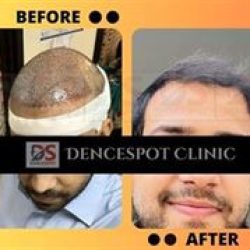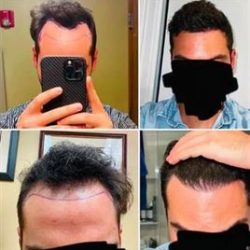Hair Transplant
Procedures for Hair Transplantation: Average Cost, What to Expect, and More A brief explanation Simply said, a hair transplant is a medical procedure that involves transplanting hair follicles from the bodily part that will provide hair to the balding area
Come to Dencespot Hair Services for the best hair transplant in Gurugram and Delhi. Our skilled doctors will provide you with the highest quality hair care. Information to consider before getting a hair transplant It’s critical to ascertain whether a hair transplant is appropriate for you if you are experiencing hair loss and are thinking about obtaining one. A person can have a hair transplant in any age as per the advice of the medical professionals at our hair transplant clinic.
Receive the greatest care for your hair. Our excellent surgeons are here to give you top-notch care. With state-of-the-art equipment and cutting-edge technologies, we are known as the Best Hair Transplant in Gurgaon and can provide you with care that will last for a longer period of time.
What is FUE Hair Transplant?
Hair Transplant FUE=FOLLICULAR UNIT EXTRACTION
FUE is a technique for extracting individual follicular units one graft at a time from the donor harvesting site (body or scalp) utilizing sharp, round, and fine punches.
What are the advantages of the FUE Hair Transplant method at DenceSpot Clinic
We use the most precise instrument and surrounded punches 0.7-0.8-0.9mm ensuring the least transaction rates (<3%) thus there is only the least graft wastage or no wastage.
Our surgical technique involves direct implantation of the extracted grafts. So that the ‘time outside the body is the least and graft survival is almost 100%.
a smaller size of punch The punches utilized to remove the grafts from the donor area are 0.7 mm and 0.8 mm. Rapid healing of the donor area is ensured by smaller and finer punch sizes.
At the Dencespot Clinic, mega and giga sessions are frequently completed in a single day’s worth of work.
Grafts are removed by highly skilled surgeons who guarantee a very low transection rate.
If the donor area of the scalp is constrained, the body and beard regions can be collected at the same time.
highly dense packing of the recipient area (up to 60–70 grafts per cm2).
Who can benefit from Hair Restoration Surgery?
Anyone can hair restoration surgery include both men and women with male and female pattern baldness who have suffered from irreversible hair loss.
Men or women who desire thinner, less-volumetric hair and a change in the shape of their hairline.
People who have places where they have scars from wounds or “scarring” skin conditions, as well as people who have experienced some hair loss following surgery.
those who desire to grow out or recover their beards, eyelashes, or eyebrows.
What happens during a Hair Transplant Procedure?
The average time for hair transplant surgery, which is typically done under local anesthetic, is 6 to 12 hours. There is no need for dietary restrictions.
At the Dencespot Clinic, we carry out hair replacement using the Powered Follicular Unit Extraction (FUE) procedure, which entails the direct removal of individual follicular units (each comprising 1-4 hairs) with the aid of specialized tools. There are NO visible scars in the donor location, and the cosmetic results are outstanding.
Then, with great care, these tiny grafts are placed into the bald or thinning portion of the scalp (the recipient area), keeping the same angle as the existing hair.
What happens after Hair Transplant Surgery?
After a hair transplant surgery, it’s crucial to follow post-operative care instructions to ensure a successful and smooth recovery. Here’s what typically happens in the days and weeks following a hair transplant.
Immediate Post-Operative Care: Right after the surgery, your scalp may be bandaged, and you’ll be given specific instructions for caring for the grafts and donor area. You may experience some discomfort, swelling, and redness, which are normal and usually subside within a few days.
Rest and Recovery: It’s essential to rest for the first few days after the procedure to allow your body to heal. Avoid strenuous activities, heavy lifting, and excessive bending or straining during this time.
Medications: Your surgeon may prescribe pain medications and antibiotics to manage any discomfort and reduce the risk of infection. Follow the prescribed medication schedule.
Swelling and Bruising: Swelling and bruising around the forehead and eyes are common and typically peak on the second or third day before gradually improving. Cold compresses can help reduce swelling.
Hair Washing: Your surgeon will provide instructions on when and how to start washing your hair. Gentle washing and patting dry are essential to prevent damage to the grafts.
How many Hair/Follicular units are required?
The number of hair follicular units required for a hair transplant varies widely from person to person and depends on several factors, including:
Extent of Hair Loss: The more extensive the hair loss or balding area, the more follicular units will be needed to achieve adequate coverage and density.
Desired Density: Some individuals may want a more densely packed result, which requires a higher number of grafts.
Hair Characteristics: The thickness, texture, and color of your hair can influence the number of grafts needed. Thicker hair may provide better coverage with fewer grafts.
Donor Area: The availability and quality of hair in your donor area (typically the back and sides of the scalp) play a crucial role. If the donor area has limited hair, the number of grafts may be limited as well.
Hair Restoration Goals: Your personal aesthetic goals and expectations will also impact the number of grafts required. Some individuals aim for a subtle improvement, while others want a more dramatic transformation.
Hairline Design: Creating a natural-looking hairline often requires careful placement of grafts, which can increase the number needed.
Surgeon’s Expertise: The skill and experience of the surgeon performing the procedure can affect the number of grafts needed. An experienced surgeon may be able to achieve better results with fewer grafts.
